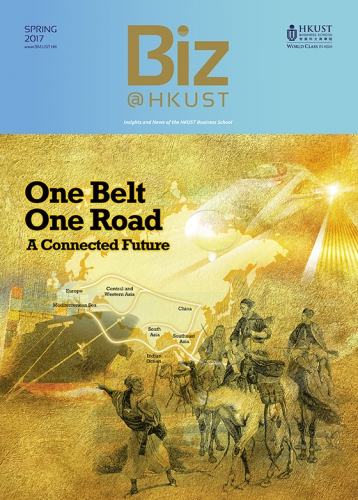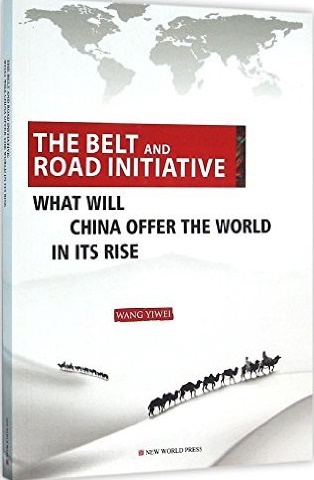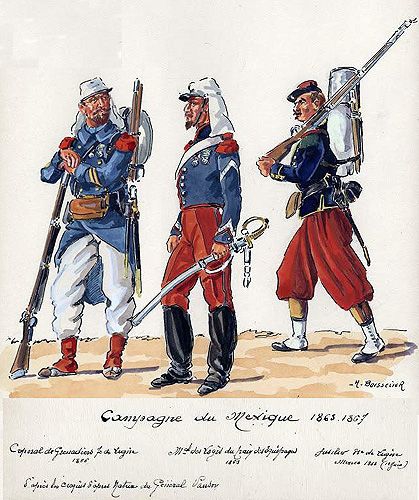samedi, 19 août 2017
Les Etats-Unis et la nouvelle « Route de la Soie » chinoise

Les Etats-Unis et la nouvelle « Route de la Soie » chinoise
Entretien avec le prof. Wang Yiwel sur le « Forum Route de la Soie » et sur le désintérêt de Merkel et de la RFA pour ce projet
Propos recueillis par Paul F. Raichmann
Q.: A la mi-juin 2017, la Chine a organisé à Beijing le « Forum Route de la Soie » (en anglais : « Belt & Road Forum » ou BRF). Vingt-neuf chez d’Etat et/ou leurs représentants, venus de 130 pays, y ont participé. Quels succès ce Forum a-t-il pu engranger ?
WY : Beaucoup. Il faut comparer ce projet à une bourse qui émettrait des actions de pointe et qui intéresserait la majorité des participants : car cette initiative ne signifie pas seulement que l’on va réactiver l’ancienne Route de la Soie mais que l’on va aller bien au-delà. En effet, ce ne sont pas seulement des représentants des pays riverains qui sont venus participer au Forum mais aussi des représentants de pays sud-américains, européens et africains. L’initiative est donc un projet global. Elle permettra d’atteindre les objectifs que les Nations Unies se sont fixés pour 2030 pour accéder à un développement durable. L’initiative BRF est un projet global, inclusif, équilibré et procurera des avantages au monde entier. Elle offre une plateforme de coopération visant à surmonter les obstacles de la fragmentation du monde. Elle répond aux problématiques qui affectent encore bon nombre de pays très différents les uns des autres, ce qui souligne sa grande importance. Elle permettra à la Chine de procéder à des échanges avec des pays en voie de développement permettant à terme d’y augmenter le niveau de vie, d’y lutter contre la pauvreté. La construction d’infrastructures jouera un rôle-clef.
Q.: Comment expliquez-vous l’intérêt fort mitigé du gouvernement allemand actuel, vu que la chancelière était absente à la conférence de Beijing ?
WY : Madame Merkel n’a pas participé parce qu’elle préparait le sommet du G20 et les élections prochaines pour le Bundestag. Mais, tout naturellement, l’Allemagne et l’Europe (représentée par l’Allemagne) cherchent à réaliser plusieurs critères via l’initiative. Dans le processus de globalisation, l’Allemagne cherche à respecter des règles fixes, tandis que la Chine cherche à lancer de nouveaux développements et des dynamiques : cette différence d’approche crée des contradictions et des conflits. Or l’initiative ouvrira bien des possibilités à l’industrie allemande et intéressera bon nombre d’autres pays qui cherchent à se réorienter vers l’Est et veulent coopérer avec la Chine. Quoi qu’il en soit, l’Allemagne a envoyé une délégation spéciale à Beijing.

Q.: Avant l’accession de Donald Trump au pouvoir à Washington, l’Union Européenne cherchait à formuler des législations contre un soi-disant dumping et contre des pratiques commerciales douteuses, législations qui visaient clairement la Chine. Quelle est la position de la Chine face à ces reproches venus d’Occident ? La Chine voit-elle aujourd’hui un changement d’attitude de l’Union Européenne depuis que des frictions opposent entre eux les partenaires atlantiques ?
WY : Il existe effectivement des contradictions entre les conceptions et les intérêts du Président Trump et ceux de l’Europe. Je voudrais rappeler aux Européens que la Communauté atlantique offre certes des opportunités mais l’Eurasie aussi. Les pays européens n’ont pas intérêt à négliger les opportunités qu’offre l’option eurasienne. Il ne faut pas oublier que les Etats-Unis, naguère, se sont, eux aussi, tournés vers l’Asie et s’intéressent à la nouvelle initiative chinoise. Les Américains estiment que celle-ci est utile pour créer des infrastructures et pour amorcer des exploitations, toutes bonnes pour le développement économique. Les Etats-Unis espèrent que leur participation au projet BRF leur permettra d’influencer l’organisation de cette nouvelle Route de la Soie. Le Japon, à son tour, et l’Europe pensent, au fond, dans les mêmes termes.
Q.: Comment l’initiative de la Route de la Soie peut-elle raviver l’économie globale et, simultanément, contribuer à l’émergence d’un monde multipolaire et équilibré ?
WY : Selon la planification choisie pour l’initiative, celle-ci devrait augmenter l’ampleur du commerce mondial à 2,5 trillions de dollars américains, en l’espace de dix ans. C’est une contribution importante à la globalisation. Avant la crise financière globale, les taux de croissance du commerce était deux fois plus important que ceux de l’économie mondiale. Après la crise, ils étaient inférieurs. L’initiative, que nous prônons, ne peut que favoriser le commerce. Elle attirera des accords de libre-échange et favorisera les investissements dans les infrastructures et dans d’autres projets. Les liens créent la croissance commerciale. Ces liens infrastructurels sont un modèle nouveau pour la globalisation. Ils pourront stimuler deux ou trois fois plus l’économie mondiale que le simple artifice consistant à abandonner les tarifs.
Q.: Ce « projet du siècle » qu’est l’initiative BR semble plutôt taillé à la mesure des grands consortiums ou des entreprises étatisées. En Europe centrale, ce sont 20 .000 petites et moyennes entreprises qui forment l’épine dorsale de l’économie. Ces entreprises sont indépendantes et ne partagent pas le pessimisme de leurs gouvernements et des médias. Mais elles pourront éprouver des difficultés à se joindre à cet immense projet. Que proposez-vous pour encourager les petites et moyennes entreprises d’Europe centrale à résoudre leurs problèmes, à sortir de l’enlisement favorisé par les politiques et les médias ?
WY : Exact : les PPP (Public and Private Partnership), c’est-à-dire les grandes entreprises et les entreprises d’Etat y joueront des rôles moteurs. Mais Chinarail Express vise à inclure les petites et moyennes entreprises dans l’initiative BR. Voici comment pourraient se dérouler les choses : les grandes entreprises et les entreprises d’Etat vont dans un premier temps développer les infrastructures ; ensuite viennent les corridors économiques reliant les zones industrialisées. C’est là que les petites et moyennes entreprises vont découvrir mille et une possibilités.

Q.: Quel danger le terrorisme peut-il représenter pour l’initiative BR ?
WY : Les autorités chinoises suivent la question avec toute l’attention voulue : comment, se demandent-elles, les liens de communications nouveaux pourront-ils favoriser les déplacements des terroristes en direction de la Chine. A court terme, le danger est de voir s’infiltrer des éléments indésirables via les corridors. Il faudra instaurer des contrôles d’identité pour freiner ces infiltrations. Mais, à long terme, l’exploitation d’infrastructures modernes et l’amélioration des communications contribueront à la sécurité de tous et faciliteront la lutte contre le terrorisme.
(entretien paru dans « zur Zeit », Vienne, n°26/2017, http://www.zurzeit.at – propos recueillis par Paul F. Raichmann).
Le Professeur Wang Yiwei est considéré en Chine comme l’un des principaux experts des nouvelles « Routes de la Soie », si bien qu’il y a récolté le sobriquet de « Mr. Belt & Road ». Il enseigne à l’école chinoise des hautes études internationales et est le directeur de l’institut des relations internationales ainsi que du Centre des études européennes. Il était auparavant diplomate de la mission chinoise auprès de l’UE (2008-2011) et professeur au centre des études américaines à l’Université Fudan (2001-2008).
12:15 Publié dans Actualité, Economie, Entretiens, Eurasisme, Géopolitique | Lien permanent | Commentaires (0) | Tags : wang yiwei, chine, route de la soie, entretien, actualité, politique internationale, géopolitique, eurasie, corridors économiques |  |
|  del.icio.us |
del.icio.us |  |
|  Digg |
Digg | ![]() Facebook
Facebook
The Austrian Empire and the Confederacy

The Austrian Empire and the Confederacy
The northern states were also home to large numbers of European immigrants who had fled their countries after failed revolutionary movements, so there were many Irish republicans in the north who detested the British Empire and many liberal Germans who had fled in the aftermath of the Revolutions of 1848. The only ‘Great Power’ to be seen at least as supportive of the U.S. government was the Russian Empire and this was mostly due to the fact that Britain and France were seen as friendlier to the Confederacy and the Russians hoped to counter this such as when Russia sold Alaska to the United States in order to prevent it being added to Canada by the British in a potential future conflict. The Austrian Empire was not extremely concerned about events in America, having many pressing problems of their own to deal with at the time, but that is not to say that they were not interested at all. Although the Emperor of Austria, Francis Joseph, had opposed the whole adventure, his younger brother was Emperor of Mexico and thus his fate, and that of the Austrian volunteer corps sent to aid him in Mexico, also depended almost entirely on the Confederates winning their independence.

As also pointed out previously, the Confederacy was also greatly influenced by the style of the Austrian Empire. The uniforms of the Confederate army were inspired by those of the Austrian light infantry and the first Confederate national flag was inspired by the ensign of the Austrian Empire, both being designed by the Prussian artist Nicola Marschall. The Emperor of Austria also had his own “eyes on the ground” so to speak, in the person of Captain FitzGerald Ross, a British-born officer of the Sixth Austrian Hussar Regiment. He made quite a stir in the southern states with his waxed moustache and braided Hussar uniform, in fact he was almost mobbed by admirers after being persuaded by some Confederate officers to wear his full dress uniform, fur busby, dolman and all, for a ride with them. He witness the Battle of Gettysburg, then went to Richmond, Charleston and then Chattanooga, Tennessee where he observed the fight from the lines of the Confederate General Braxton Bragg. He also visited the Gulf coast, Mobile, Alabama and so on. Like many, he was very impressed by the Confederate military and, like many more, was also impressed by the southern ladies. He became an ardent Confederate sympathizer, even to the point of picking up a rifle and taking part in a battle during his long stay in the south. When Ross finally returned to Europe, no matter what bad news reached him, he remained confident that the south would ultimately win.
Such a thing would have, inadvertently, greatly expanded Austrian influence in the New World given that the establishment of a Habsburg monarchy in Mexico (or rather the ‘reestablishment’) would have given Austria a sort of foothold in the region. Confederate President Jefferson Davis was certainly aware of this and tried to enlist the Prussian observer, Captain Justus Scheibert, as an envoy to Emperor Napoleon III of France. He proposed a sort of Franco-Confederate alliance, pointing out that in the Mexican War (of which Davis was a noted veteran) the U.S. had defeated Mexico with only 12,000 men and that if Napoleon would lift the Union blockade of the southern coast, which Davis believed could be done with ‘the stroke of a pen’ and would ensure a Confederate victory, he would supply 20,000 Confederate troops to aid the Emperor Maximilian of Mexico, explaining that southern troops were adjusted to the climate and familiar with the fighting style of the Mexicans.
However, this, as we know, did not come to pass. Although tempted, none of the European powers ultimately were bold enough to risk war with the United States by recognizing the Confederacy (though Pope Pius IX did address a letter to Jefferson Davis as President of the C.S.A.). When the Confederacy fell, the effort to spread monarchy in the Americas quickly fell apart. The U.S. government dispatched an army to the south Texas border and warned the French to withdraw or face war. Napoleon, not wishing to see the enterprise be for nothing, hoped that the Austrian Empire would take up the French cause of supporting the Mexican imperialists. A further 2,000 Austrian volunteers (roughly) were assembled at the port of Trieste, ready to embark for Mexico and fight for Emperor Maximilian. It was, though, at that point that the Union government stepped in by way of U.S. Minister to Vienna John Lothrop Motley who went to the Hofburg and informed the Austrian Emperor quite bluntly that the U.S. recognized only Benito Juarez as the leader of the legitimate Mexican government and that if the Austrian troops were allowed to leave, the U.S. would consider the Austrian Empire to be at war with the Mexican Republic and the U.S. Navy would take retaliatory action on behalf of Mexico.

The expedition was thus canceled, the Austrian soldiers disbanded and the Austrian Volunteer Corps already fighting in Mexico was promptly recalled. Many had already been slaughtered at the Battle of Santa Gertrudis where, seeing which way the winds were blowing, their comrades of the Mexican Imperial Army had deserted in the middle of the battle to join the republicans. The surrender of General Lee at Appomattox Court House in 1865 had set the dominos to falling, the Austrians pulled out and shortly thereafter the Habsburg Emperor of Mexico was captured and shot, the Austrian Emperor then even having a difficult time retrieving the body of his slain younger brother. The Imperial House of Habsburg had had a presence in the Americas ever since Philip the Handsome and Charles V had held their Spanish crowns until the succession was taken up by the Bourbons of France. In 1864, however, another Habsburg returned to, he hoped, usher in a new era of monarchy in the Americas but with the fall of the Confederacy, it was inevitable that the Habsburgs would once again lose their place in the New World.
01:35 Publié dans Histoire | Lien permanent | Commentaires (0) | Tags : histoire, sudistes, confédération, confédérés, états-unis, guerre civile américaine, guerre de sécession, mexique, empire austro-hongrois |  |
|  del.icio.us |
del.icio.us |  |
|  Digg |
Digg | ![]() Facebook
Facebook


